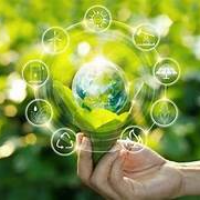In actuality, sustainability refers to initiatives that balance economic growth with preservation of the environment and welfare of people. The common definition of sustainability is the interdependence of three broad dimensions: economy, society, and environment, taking into account the needs of both the present and the future generations.
Growth promotes investment, which makes sustainability possible. Growth in the economy boosts demand, spending, and consumer confidence—all essential components of a favourable investment climate that the energy transition will require. Equality in economic growth that creates wealth for all while protecting the environment is the core of sustainability. For a development to be considered complete, the other pillars of sustainability will be strengthened through investment and equitable distribution of financial resources. Without sufficient environmental protections, economic growth will be threatened, and environmental protection will be ineffective in the absence of economic expansion. The natural resources of the planet impose constraints on economic expansion. The degree of resource substitution, technological advancement, and structural modifications all affect these bounds.
Even though climate change may have a negative economic impact on developing nations, this effect is only significant when compared to the counterfactual of a world without climate change; in this case, the net effect would still be continuous economic growth due to other factors outweighing the impact of climate change. Without sufficient environmental protections, economic growth will be threatened, and environmental protection will be ineffective in the absence of economic expansion. The natural resources of the planet impose constraints on economic expansion. The degree of resource substitution, technological advancement, and structural modifications all affect these bounds. Without sufficient environmental protections, economic growth will be threatened, and environmental protection will be ineffective in the absence of economic expansion. The natural resources of the planet impose constraints on economic expansion.
These boundaries fluctuate depending on how much technological advancement, structural modifications, and resource substitution occurs. Climate change disruptions to daily life can result in missed work and school days as well as negative effects on trade, transportation, energy production, agriculture, fisheries, and tourism. According to the Reserve Bank of India's most recent report, labor hours lost due to intense heat and humidity could put as much as 4.5% of India's GDP at risk by 2030. Agriculture: Crop cycles may be significantly disrupted by climate change, which could result in low agricultural yield. More products and services are produced at a faster rate of growth, but there is also an increase in noise pollution, air, water, and land pollution, and environmental harm.
Since the late 1960s, when the severity of the pollution problem became apparent, more radical environmentalists have long believed that economic growth is an unmitigated evil. "Meeting the needs of the present generation without compromising the needs of future generations" is the definition of sustainable development. Thus, if fixed assets—including land—remain constant or grow over time, economic growth will be sustainable. Human resources are the fundamental requirement for sustainable development, just as natural resources are the fundamental requirement for development. While sustainable development is focused on conservation and reasonable usage, environmental development is oriented toward exploitation and reclamation. It is associated with economic growth and development because it promotes eco-friendly practices that can mitigate the negative environmental effects of economic expansion.
Climate change and economic growth are linked. Countries that are growing economically frequently consume more energy, which raises carbon emissions. This relationship is not always simple, though. Some nations have achieved economic growth apart from carbon emissions through investments in environmentally sustainable projects such as renewable energy. Development that is sustainable is that which satisfies current needs without jeopardizing the capacity of future generations to satisfy their own. It is a challenge to strike a balance between environmental sustainability and economic development, and doing so calls for carefully weighing the trade-offs between environmental protection and economic growth.
One of the most important environmental problems of our day is climate change. There is a strong correlation between sustainable development and climate change. The least developed and impoverished nations will be the most severely impacted, and they will be the least equipped to handle the expected shocks to their social, economic, and environmental systems. There is continuous discussion about whether economic growth can be maintained in conjunction with addressing climate change and adhering to stricter environmental regulations. Various viewpoints range from the idea that environmental constraints do not limit economic growth to the idea that sustained economic growth is incompatible with environmental.
The economics of mitigating climate change offer a complicated web of advantages, disadvantages, difficulties, and opportunities. Achieving a balance between environmental objectives and economic expansion is crucial for properly addressing the pressing climate catastrophe. Even though mitigation has unavoidable costs, taking proactive measures can have positive effects on the economy, create jobs, and enhance public health. Societies may work toward mitigating climate change while guaranteeing a sustainable and prosperous future for all by establishing carbon pricing mechanisms, encouraging innovation, and adopting a just transition framework.

